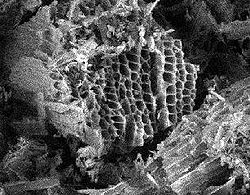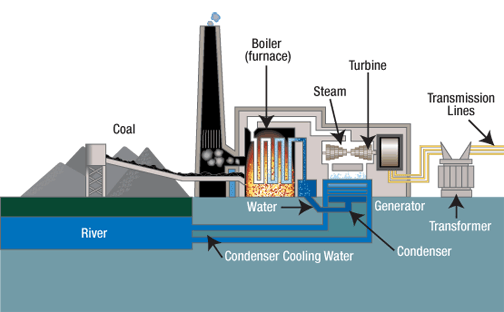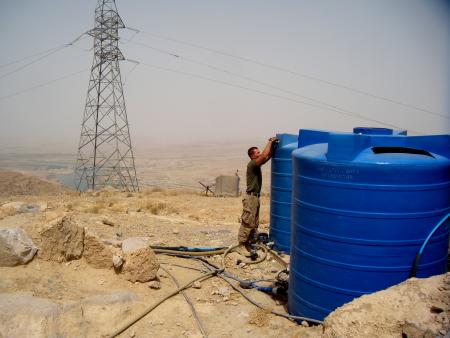Water News for September 2011
While you were fretting about the drop in consumer confidence and wondering if things will ever be the same, a lot of important and interesting things happened in the world of water. Read on to hear all about it.
An alcohol-based chemical spilled from a Fayette County, PA industrial water treatment plant into the Monongahela River, killing fish and disrupting river traffic.
New research shows that wastewater recycling processes may generate more greenhouse gases than traditional water-treatment methods.
 |
| What has been called the world's largest saltwater crocodile has been captured by Philippine villagers. Since capture, according to later reports, the crocodile, Lolong, who has in his day eaten a few villagers, has been on a hunger strike. |
Jennifer Lopez revealed her secret for beautiful skin: drink lots of water. She says: " I really just try to stay out of the sun, I am not a big drinker or a smoker and I think that really helps my skin. I try to get good rest. I really believe the way to get and keep your skin nice is to do those type of things. Drink a lot of water that is the top tip."
The town of Newburgh NY borrowed $21.8 million to build a water filtration plant that will satisfy the demands of state and federal regulators.
More than 200 of the world’s best and brightest wastewater treatment professionals will compete in Operations Challenge 2011, a unique, fast-paced skills competition for wastewater operations and maintenance professionals next month in Los Angeles. Now in its 24th year, the one-of-a-kind event will take place October 17-18, 2011 at the Los Angeles Convention Center. 'Winners are determined by a weighted point system for five events including collection systems, laboratory, process control, maintenance and safety."
BRIDGEWATER, NJ— The release of 200 million gallons of standing water from Pfizer’s American Cyanamid Superfund site into the adjacent Raritan River and its flood-connected Delaware and Raritan Canal will not create an environmental hazard, said Jeff Tittel, the director of the New Jersey chapter of Sierra Club. The main chemical in question is benzene.
With much of the state in a record drought, a Galveston, TX tourist attraction is staying green and saving $1.25 million annually by irrigating landscape with water the city would otherwise dump into Galveston Bay.
NSF International successfully enforced its certification mark rights against Parson Adhesives, a Rochester Hills, Mich. company that distributes adhesives for use in drinking water products worldwide. Parsons admitted it falsely represented some of its products as being NSF certified and that it willfully infringed the NSF mark in the marketing and sales of its adhesives for use in drinking water products.
Dozens of volunteers helped clean up 25 sites along the New Hampshire coast and Great Bay during the 25th International Coastal Cleanup. Much attention was given to 4.3 million plastic disks that were accidentally released from a wastewater treatment plant last March.
A decades-old chemical spill is likely spreading cancer-causing industrial solvents into groundwater outside of Aberdeen, NC at levels as much as 86 times federal maximum standards.
It was reported by an anti-fluoridation group that LULAC, the oldest Hispanic civil rights organization in the United States, adopted in July a resolution opposing the fluoridation of water as a violation of the rights of minorities. (The Occasional has been unable to confirm this from LULAC's website.)
An Australian company has a recycling shower that is purported to save 70% of the average 19,000 gallons of water used annually by a conventional shower.
The University of Maryland has devised a way to use moss to kill bacteria in swimming pools.
A clean-up is underway to remove Trichloroethylene, also known as TCE, left by the US Air Force 60 years ago at Beale Air Force Base in California. High levels of TCE have been found in groundwater in the areas used by the Air Force during WWII.
Drought has forced Huntsville, TX to impose severe water use restrictions.
Test results of water samples taken from the Anacostia River show that a black substance that has plagued a portion of the river since mid-August is a rare algal bloom known as dinoflagellate.
Residents of Baker, FL are complaining loudly about the stench and epidemic of houseflies originating from a wastewater sludge dump.
In Tel Aviv, IDE Technologies claims to have launched "the industry’s first green reverse osmosis (RO) system for water desalination." The system "optimizes energy consumption," but details aren't given.
The Environmental Protection Agency (EPA) announced that the Air Force has signed an agreement with the EPA and the Arizona Department of Environmental Quality (ADEQ) to clean up Air Force-owned property at a site near Tucson that is contaminated with volatile organic compounds and other chemicals.
A journalist was hit by a sandwich thrown by a city official during a heated discussion over a proposed $100 million desalination plant in Santa Cruz.
The IBWA (International Bottled Water Association) issued a lame statement arguing that drinking water (instead of drinking sugary soft drinks).reduces the risk of Type 2 Diabetes.
Diana Nyad, sixty-two years old, attempted to swim 103 miles from Cuba to Florida, but Portuguese man o' war stings took their toll and she didn't make it.
The Ipswich, MA Utilities Department issued a warning after drinking water tests revealed contamination from perchlorate. Perchlorate affects human health by interfering with the thyroid gland. It is used in the manufacture of solid rocket fuel and fireworks.
 |
The Peroxide Number
by Pure Water Annie
Occasional Technical Writer Pure Water Annie Sheds Light on the Mysterious "Peroxide Number" |
Filter carbon, or “charcoal” as it is sometimes called, is not all alike. Carbons are prepared from a variety of raw materials (coconut shells, wood, and bituminous coal, for example), and they are specially processed to be good at specific tasks, like removing chlorine, VOCs, chloramines, hydrogen sulfide, or colors (tannins).
Here's a good summary of carbon's all-around usefulness from an article by Ken Schaeffer.
Activated carbon filter media is commonly used in point-of-use/point-of-entry (POU/POE) water treatment applications. It can be used either by itself, such as to remove chlorine from tap water, or in combination with other water treatment processes such as reverse osmosis (RO), ultraviolet (UV) and ion exchange for treatment of more complex water streams containing various contaminants.
Activated carbon is known as the universal adsorbent because it has the capacity to adsorb a myriad of compounds and remove them from a liquid or vapor stream. It is commonly used in water filters in granular form or in block form (made from powdered activated carbon) to remove taste- and odor-causing chemicals and additives such as chlorine or chloramine.
It works both as an adsorbent, adsorbing organic compounds such as chloroform or geosmin from water, and as a catalyst, such as reacting with chlorine to break the chemical bond producing chloride ions as a result.
The block form of carbon filter also acts as a mechanical filter and can be rated as 1-micron, 5-micron, etc. Carbon blocks are made from coal, coconut shell and wood powdered carbons, and each manufacturer has its own guarded recipe for block-making.
 |
Filter carbon has unbelievable surface area which allows an amazing capacity for adsorption and catalytic activity. |
Filter carbon is often rated according to a system of rating scales that describe its properties.
These include, for example, the “molasses” number, which mainly measures the carbon's ability to remove color. The iodine number measures the overall adsorption capacity of the carbon. Other common indicators are ash content, the hardness abrasion number, carbon tetrachloride activity, particle size distribution, and apparent density.
One very important and often-cited measurement of carbon performance is the so-called Peroxide Number, which is used to measure the carbon's ability to promote catalytic reactions. The peroxide number is a time measurement, expressed in minutes, of the time that is required by a carbon to decompose hydrogen peroxide. The lower the peroxide number, the greater the carbon's ability to decompose hydrogen peroxide and consequently to perform certain other activities, like chloramine and hydrogen sulfide reduction. The lower the peroxide number, the higher the catalytic activity and hence the better the expected performance.
The peroxide number is an indicator of the carbon's ability to perform contaminant reductions that are done by catalytic action rather than adsorption. The most common, and those most often asked about, are reduction of chloramines and hydrogen sulfide.
Although all carbons will treat chloramine and hydrogen sulfide if given sufficient bed size and a sufficiently slow rate of flow, some carbons are much better at this than others. Especially, carbons that are specially processed to promote catalytic activity [which does not grab and hold the contaminant (adsorption) but converts it to something that is unobjectionable] are superior performers for the reduction of hydrogen sulfide and chloramines. These carbons change hydrogen sulfide to elemental sulfur, which is easily caught by a filter, and chloramines to chlorine (which is then converted to harmless chloride) and ammonia.
Here are typical peroxide numbers for various carbons. Remember, the lower the number the more effective the carbon is at chloramine and hydrogen sulfide reduction.
Catalytic Bituminous Coal-Based – 10
Conventional Bituminous Coal-Based – 40
Subbituminous Coal-Based – 40
Lignite Coal-Based – 60
Wood-Based - >120
Coconut-Based - >120
(Figures from Hayden and Spotts, "Fundamentals of Catalytic Activated Carbons," Water Technology Magazine.)
The superior performance that can be expected from catalytic carbon in reduction of chloramines and hydrogen sulfide is apparent from the Peroxide Numbers above.
Tensions between water, power needs explored
Summit explores demand tensions
Reprinted from the Sept. 19, 2011 Journal Sentinel
In a city that's staking its economic image on water research and policy, one paradox will become unavoidable: Water purification requires huge amounts of electricity, while utilities use large volumes of water to generate electricity.
That creates a vicious circle. Water reserves are under pressure while demand for electricity and water are escalating, due in part to demand from China, India and the developing world.
Those competing demands create what some call a "choke point," according to water policy experts meeting Monday in Milwaukee at the city's fifth annual Water Summit.
The water-energy nexus was one of the main themes that emerged at the two-day summit, which continues Tuesday. The event is sponsored by the Milwaukee Water Council, a trade group that wants to lure new jobs, research and investment into the existing cluster of water technology companies in southeastern Wisconsin and re-brand the region as an international hub of water technology.
The shortages in water and energy create new opportunities for technology innovators and policy wonks. Although the water-energy phenomenon is old, it only recently received attention from politicians and policy makers.
It wasn't until 2006 that the U.S. Department of Energy commissioned its first comprehensive study on the topic, said Keith Schneider, senior editor of the Circle of Blue website that's devoted to water news and research.
Water comes at a price
"We haven't confronted it in the U.S. in a policy way," Schneider said, commenting on the broader issue. China, however, is tackling the issue, he said.
Seventy-five percent of the cost of water is electricity, according to Diana Glassman, a board member at the World Policy Institute, a think tank.
Globally, 81% of world water use is for agriculture. The figure rises to 84% when livestock needs are taken into account. But a fifth of all nonagricultural water is used to produce electricity, Glassman said
California alone expends 19% of the state's total energy consumption to clean and deliver water, above the national average of 13%, Schneider said.
One of the oddest wrinkles in the water-energy debate, however, is that so few give it any attention. That's mainly because oil, gas and energy industries have attracted nearly all attention and investment.
Asked by a venture capitalist which sectors of the water-tech industry are attracting the greatest flow of funds, Glassman replied that "all the money right now is going into energy," not water.
Some $500 billion each year is invested in oil and gas exploration and production, the thinking being that an era of high oil prices favor the industry, Glassman said.
"When energy competes with water for supply, energy always wins," Schneider said.
Changing a relationship
Flash points of conflict are already beginning to show. North Dakota has a state economic policy of drilling oil, but its oil deposits require pumping 5 million to 7 million gallons of high-pressure water to jump-start the wells and begin pumping the oil out. The state, however, is undeterred by its water scarcity, Schneider said.
Others note that production of ethanol, widely criticized for inefficiencies as a fuel, drains aquifers at the reactors that produce it, often guzzling hundreds of gallons of water a minute and sometimes sucking local wells dry.
"Energy production and water use have to change," said Phillip Enquist, an urban design planner at the Skidmore, Owings & Merrill architectural firm in Chicago.
One reason the Water Summit highlighted the issue is that the region already has taken a few steps to reduce the energy costs of wastewater treatment.
The Milwaukee Metropolitan Sewerage District, which treats wastewater for 1.1 million people in 28 municipalities, has treatment plants that are "energy hogs," said MMSD Executive Director Kevin Shafer. What's more, MMSD spends $13 million each year, or 16% of its operating budget, on electricity.
But MMSD also has plans to shrink its carbon footprint by 90% by 2035. It will use solar power installations and a variety of technologies, but its main strategy is a 19-mile pipeline that will tap into the natural gas from garbage landfills.
Policy decisions in water invariably will affect energy policy, said Chris Sacksteder, global market manager for industrial water and power technology at Dow Water and Process Solutions. "Water and energy is inseparable," he said.
Texas, meanwhile, is becoming a national test case. It's in the middle of a severe drought, one of the worst in a century, and yet its utilities want to build new power plants - with applications and opposition that will be closely watched, Schneider said.
Lisa Jackson, administrator of the Environmental Protection Agency, is scheduled to appear at the water summit Tuesday.
And the Drought Goes On
According to the Texas Water Development Newsletter:
The current drought in Texas is capturing national and international attention. While it's not unusual for Texas to experience dry spells, the current dry spell is notable for its fierce intensity and state-wide impact resulting in record-breaking low rainfalls and record-breaking high temperatures across the state. The state climatologist has already declared the current dry spell the worst one-year drought in Texas' history. Given how drought prone Texas is, that's saying something.
How much water do lawns use?
According to Jordan Laio: When it comes to manicured lawns, the green choice is always to go without unless the lawn is functional and practical for, say, a play area for kids. Otherwise, lawns use a ton of water, and don’t offer many benefits. How much water does a lawn require to stay green? It depends on the size of your lawn, but according to the Handbook of Water Use and Conservation, the average lawn uses an estimated 10,000 gallons of water per year, not including rainwater.
Sir Francis Bacon, Early Water Treatment Experimenter
The need for fresh, usable drinking water goes as far back as we can trace the existence of humans. In fact, ways to improve filtration and explore different resources to form pure water is nothing new either. In 1627, for example, Sir Francis Bacon conducted 10 water purification experiments. These experiments were among the first desalination studies in our history. Bacon strived to find ways to purify seawater through sand. Today, technology, research and education are improved, yet we still require ways to maximize our global water supply and divert from a looming water crisis. (Rich DiPaolo, "Potable Water Issues.")
 |
| Bacon should have stuck with water research, because when he undertook experiments with meat preservation by freezing he contracted pneumonia and died. |
 |
Numerical Wizard B. Bea Sharper ferrets out the facts on
The Water and Energy Nexus |
Given the wide discrepancy seen in the expert opinion in this area, the chance that water/energy figures are one third accurate--1 in 17.
Percentage of the world's water used for agriculture -- 84%.
Percentage of California's energy expenditures that go for producing and providing water --18%.
Percentage of the cost of water that goes for electricity -- 75%.
 |
Percentage of US electricity that is produced in thermoelectric power plants, which use enormous amounts of cooling water--90%. |
Gallons of water required to refine one barrel of crude oil -- 1,851.
Average daily water use of a large ethanol plant--400,000.
Average daily water use of the Sherman Hills Golf Course in Florida--363,000.
Factor by which gasoline production exceeds ethanol production in water use, according to once source--0.
Factor by which gasoline production exceeds ethanol production in water use, according to another source--30.
Percentage of the two sources above that were funded by the ethanol industry--50%.
Gallons of water required to "jump start" a North Dakota oil well--5 to 7 million.
|
|






